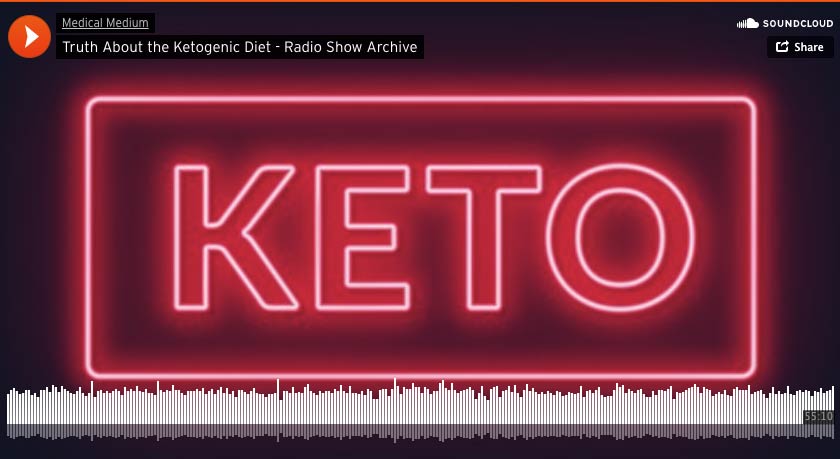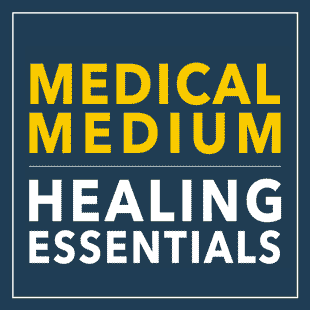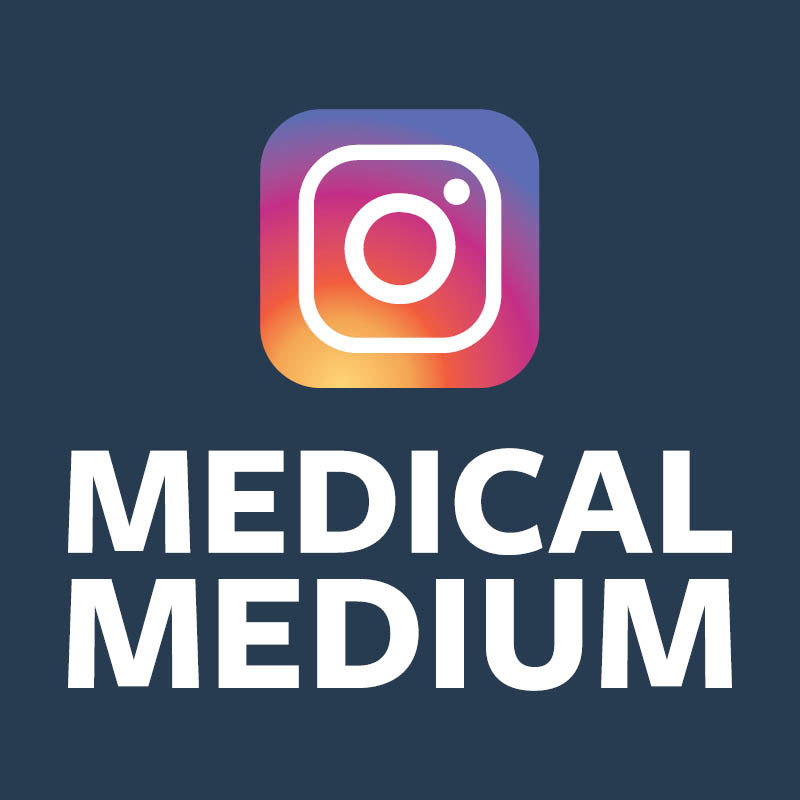Watch: Truth About The Ketogenic Diet

Truth About The Ketogenic Diet
If you’ve looked into the trendy diets of today, you’ve probably come across at least one diet that focuses on getting enough protein and minimizing carbohydrates. The truth is that there are many high protein and low carbohydrate diets that have been trendy over the last few decades. Today’s ketogenic diet is just one of the latest iterations of the high protein, low carb diet trend that started in the 1970s. While some benefits can be gained from any diet that eliminates processed foods like candy, cake, cookies, and fried food, there is only so far a high protein, low carb diet can take you when it comes to healing your body. In truth, this way of eating is as misinformed—and nearly as harmful—as it was when it started decades ago. I know you might have read or heard that high protein and low carbohydrate diets are beneficial, but today I will share why they are problematic, especially for someone with a chronic health condition or symptom.
Following a keto diet is damaging for your body and brain whether you eat an animal-based keto diet or a plant-based keto diet. Some people experience temporary relief or weight loss on a keto diet, but it’s important to understand that these improvements are short-lived. Especially if you suffer from chronic illness, autoimmune disease, neurological conditions or mysterious symptoms, you’ll want to run the other way from anything close to the keto diet.
For a full understanding of what your body really needs for healing and long-term health, check out Liver Rescue: Answers to Eczema, Psoriasis, Diabetes, Strep, Acne, Gout, Bloating, Gallstones, Adrenal Stress, Fatigue, Fatty Liver, Weight Issues, SIBO & Autoimmune Disease.
Inherently Flawed
The entire premise of the keto diet is incorrect to begin with. The diet involves restricting carbohydrate intake while focusing on high protein and fat intake. The theory is that this way of eating causes your body to go into a metabolic state called ketosis, where you efficiently burn fat as an energy source for your body and brain.
The reality is, it’s not possible for your body to go into ketosis if you’re eating any amount or form of sugar whatsoever, including the natural sugars found in most foods. That means anyone eating even a tiny bit of nuts, seeds, avocado, cheese, butter, tomato, or green juices is taking in natural sugar. Unless someone is eating only bacon three times a day (in which case they’d feel terrible and cause even more damage for themselves down the road), they’re not entering ketosis.
The idea that your body can switch to burning fat as fuel is also flawed. We don’t run on fat. We run on glucose, which is sugar. If it were true that our bodies could flip from burning glucose for energy to burning fat for energy, as the keto diet suggests, then it would be impossible for someone who was overweight or obese to starve. If the ketosis theory is correct, you could take away an overweight person’s food completely and they’d continue to live for a long period of time, using their fat as energy. But that’s not how it works. Fat does not convert to usable material for our bodies.
Anyone of any weight can starve or be malnourished without the glucose and nutrition their body needs, that is, without the glucose and nutrients that are bountiful in carbohydrates such as fruits and starchy vegetables, and without the nutrients found in leafy greens and herbs. These are what I call the CCCs, which stands for Critical Clean Carbohydrates. I detail why these foods are necessary, helpful and healing in Liver Rescue and share how dozens of the foods in the CCC category bring healing to the body.
The Old Roots of High Protein, Low Carb Diets
To everyone’s detriment, the world has become anti-sugar and anti-carbohydrate. Shunning fruits and starchy vegetables is taking away people’s ability to heal. How did we get here? The answer requires a quick history lesson and an open mind. In the early 1930s, the meat packing industry and the government joined forces to promote protein. Around this time, instead of going to the farmer and the butcher shop for meat, animal products were becoming industrialized. They were made cheap and available in mass. They were promoted as critical. Monetary interests were put ahead of people’s health.
The idea that protein is more important than anything else was pushed by the partnership of industry and government. This belief was indoctrinated into the conventional medical model and taught in grammar schools. It got drilled into everyone’s thinking and consciousness (and has remained there in the decades since).
Before this colluding effort to push protein, health practitioners were not focused on protein and meat. Protein wasn’t the top choice to sustain people. Alternative practitioners and healers especially believed in fruits, leafy greens, vegetables, herbs, potatoes, nuts and seeds. And although they weren’t focused on protein, the reality is there’s some protein in everything you eat. It’s in spinach, it’s in berries, it’s in bananas. It’s everywhere. Nonetheless, the baseless but calculated decisions to promote heavy protein intake continue to influence and confuse our thinking today. For more on this topic and how we have been misled, check out my podcast and article on The Truth About Protein.
Taking Aim at Fats...and Missing
People who are in the health industry have always been in search of the best diet. In the 1970s, doctors were seeing the rise of heart disease, high blood pressure, liver disease, cholesterol and diabetes. People were cutting out fast food, processed food and greasy foods, yet they still were experiencing all kinds of symptoms and conditions. In the 70s, doctors and the medical system had correctly recognized that too much fat, too many animal products and too much red meat was contributing to disease.
All that fat intake leads to higher fat content in the blood, which leads to a lack of oxygen in the blood. Over time, diminished oxygen levels getting to the heart and brain contributes to problems like strokes and heart attacks. Too much fat in the bloodstream also triggers the adrenal glands to shoot off adrenaline as it tries to clean up your blood to protect you.
Unfortunately, the realization that fat was harmful to our health didn’t translate into an effective response. Instead, grocery shelves filled up with low-fat and fat-free products (which often contained unhealthy, processed ingredients or trans fats). People began eliminating fats that actually had healthy properties, such as coconut oil, avocado, nuts, seeds and olives. And on top of that, people continued to eat lots of animal protein. People didn’t realize that animal protein translates into animal fat, which means they were still eating high fat diets even if they thought they had a “lean cut.” They were still consuming way too much fat—and often even worse types of fat than before—on their low fat diets.
With this flawed approach, any progress that could have been made fell apart. Health professionals realized the low fat diet trend wasn’t working. Eventually, the only thing left to do (because protein remained untouchable due to the agenda and money behind it) was to go after carbohydrates. That was the birth of the keto diet.
Since then, it’s been one version after another of a trendy low carb, high protein diet. The same concept has been repackaged into different names over the decades with just a slight twist to market it as its own unique diet program. One thing that has altered slightly is today’s high protein diets have a little more carbohydrates. Modern versions allow in some leafy greens, a bit of avocado, or a few berries and nuts. That’s because the older versions that allowed none of these healing foods destroyed people’s health. Our bodies and brains need the nutrients, antioxidants, phytochemicals, vitamins and minerals that are packed into leafy greens, fruits, berries, vegetables, coconut water and raw honey. Sprinkling these healing foods into today’s high protein, low carb trends makes these diets a little less harmful.
Why Keto Can (Sort of) Work (Temporarily, Sometimes)
When people commit to almost any diet, including a high protein, low carb diet like keto, they get off all the worst of the worst foods. They eliminate fast food, greasy food, processed foods and refined sugar. They clean some things up and eliminate some toxins, which offers their bodies a bit of reprieve.
The true cause of most chronic health conditions and symptoms, including weight gain, are what I call troublemakers. In Liver Rescue I explain more about these troublemakers: viruses, bacteria, toxic heavy metals and man-made chemicals. All of these have been prolific since the Industrial Revolution, and they’re making people sicker than ever at younger and younger ages. Your liver works incredibly hard to capture and filter out troublemakers, but it’s got a big job to do.
Diets that are high in fat and protein are a huge burden to a liver that’s already working overtime to deal with toxins. And think about how fat and sugar usually go together: doughnuts, cakes and cookies; pasta with butter; Asian food with sesame oil or peanut oil; fatty ribs with BBQ sauce; even peanut butter and jelly sandwiches. People don’t consume a lot of sugar alone. Nobody’s on an all-candy diet. Yet sugar has become the scapegoat for health problems in recent years while the fat that goes hand in hand with it is overlooked.
Instead of just removing the unhealthy, refined sugars, the fear went too far and people became afraid of the healthy natural sugars in fruits and starchy vegetables. Now people are taking all sugars out and keeping fats and protein high. Certainly people see some relief upon taking out refined sugar because that’s one troublemaker to the body. For instance, when people remove sugars they’ll see A1C levels might drop or diabetes and prediabetes improve. But it doesn’t fix the problem altogether.
Too much fat in the blood is a big problem. When there’s too much fat in the blood, the body tries to get rid of the sugar. It tries to move sugar into the cells because your cells need sugar to survive. But it can’t accomplish this well because the fat blocks the sugar from entering the cells. So then your body produces more insulin and you end up with insulin resistance. The sugar gets trapped in the bloodstream, insulin resistance begins, A1C levels go up and the liver becomes more sluggish.
So that improvement seen when someone removes sugar is a smoke screen to the real problem. The minute they bring any sugar back, their problems return. That’s because sugar was never the problem in the first place. The real issue for chronic illness, diabetes, blood sugar issues and weight gain is a sluggish, fatty, tired liver that’s overloaded with pathogens and toxins. I explain exactly how diabetes, blood sugar issues, weight gain, and many more symptoms and conditions develop and how these troublemakers are at the root of chronic illness and autoimmune disease in Liver Rescue, along with guidance on how to heal.
Another Keto Downfall: Intermittent Fasting
People tend to do intermittent fasting when they’re on a keto diet. This is because they feel better. They feel better because eating fat and protein all day eventually makes you feel terrible, like you’re falling apart. With all that fat clogging the bloodstream and reducing the blood’s oxygen levels, your organs and cells can’t get the oxygen they need. Fasting offers a reprieve compared to the alternative of eating more fat and protein. So people often fast, filling their depleted energy levels with caffeine and coffee and chocolate to get through the day.
Of course, this is harmful too. Dumping caffeine into the body floods your system with adrenaline. Adrenaline is corrosive, and it’s another thing your liver has to sop up and try to filter out. Down the road, people who are eating lots of fat, and caffeine in the meantime, will sadly find themselves getting sicker and sicker.
If someone does temporarily feel better eating an animal-based keto diet with multiple meals a day, then aside from the removal of the processed foods they may have been eating, it will be because of the adrenaline naturally found in the animal foods they are eating which can make someone temporarily feel better. But this isn’t a true healing that’s happening, but a mask to how they’d really feel without that adrenaline. Eventually, the person will start to feel worse and worse.
Sustained Healing That Works
Now that you know the truth about the keto diet and high protein, low carb diets in general, it’s important to educate yourself on what your body really needs to heal and thrive. That’s what I cover in detail in all of the Medical Medium book series. In Liver Rescue I lay out exactly how you can heal and move forward. You may not think you have any issues with your liver, but the truth is that nine out of ten people right now have an overburdened liver to some degree and if you have any symptom or condition, such as acne, eczema, migraines, cold sores, fatigue, vision problems, digestive issues, or any other, it means your liver needs your help. Dig in to Liver Rescue: Answers to Eczema, Psoriasis, Diabetes, Strep, Acne, Gout, Bloating, Gallstones, Adrenal Stress, Fatigue, Fatty Liver, Weight Issues, SIBO & Autoimmune Disease and Medical Medium Celery Juice: The Most Powerful Medicine of Our Time Healing Millions Worldwide to properly understand how you can support your body to heal.
This item posted: 02-Oct-2019
The information provided on this Site is for general informational purposes only, to include blog postings and any linked material. The information is not intended to be a substitute for professional health or medical advice or treatment, nor should it be relied upon for the diagnosis, prevention, or treatment of any health consideration. Consult with a licensed health care practitioner before altering or discontinuing any medications, treatment or care, or starting any diet, exercise or supplementation program. Neither Anthony William nor Anthony William, Inc. (AWI) is a licensed medical doctor or other formally licensed health care practitioner or provider. The content of this blog and any linked material does not necessarily reflect the opinions of Anthony William, AWI or the principal author, and is not guaranteed to be correct, complete, or up to date.
Thanks for printing this post. For more, visit www.medicalmedium.com


